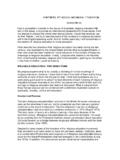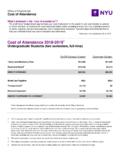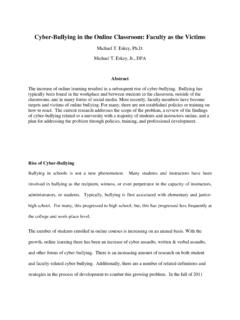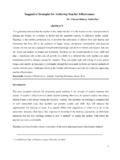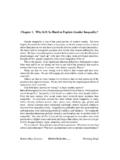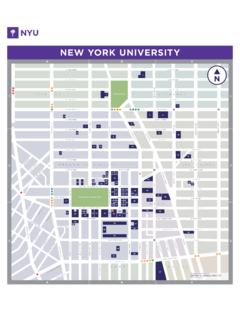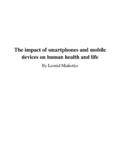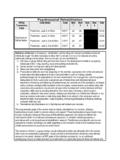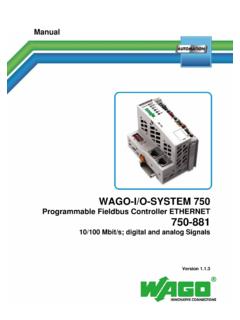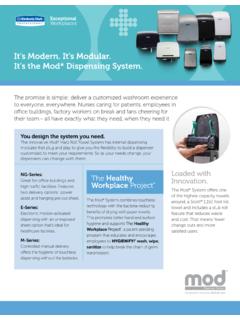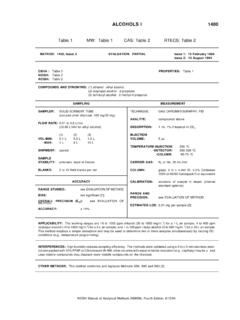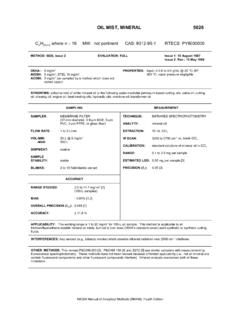Transcription of Infrared up-converting phosphors for bioassays
1 Infrared up-converting phosphors for Corstjens, S. Li, M. Zuiderwijk, K. Kardos, Abrams, Niedbala and TankeAbstract:The development of up-converting phosphorreporter particles has added a powerfultool to modern detection technologies. Carefully constructed phosphor reporters have core-shellstructures with surface functional groups suitablefor standard bio-conjugations. These reportersare chemically stable, possessthe unique property of infraredup-conversion, and are readilydetected. In contrast to conventional fluorescent reporters, up-converting phosphor particles do notbleach and allow permanent excitation with simultaneous signal integration.
2 A large anti-Stokesshift (up to 500 nm) separates discrete emission peaks from the Infrared excitation source. Alongwith the unmatched contrast inbiological specimens due to the absence of autofluorescence uponinfrared excitation, up-converting phosphor technology (UPT) has unique properties for highly-sensitive particle-based production and characteristicsof UPT reporter particles as wellas their application in various bioassays is IntroductionThe development of sophisticated particle-based bioassayswith reporter molecules engineered for specific applicationshas had a tremendous impact on the diagnostic andpharmaceutical industries.
3 Fluorescent microspheres havereplaced traditional white latex beads in most qualitativeagglutination detection applications[1]and novel, sensitivereporters have emerged from nanotechnology research anddevelopment[2 9]. Particle-based bioassays now offer: (i) ahigh sensitivity; (ii) a quantitative measurement; and (iii)multiplexed phosphor technology (UPT), utilising rareearth doped ceramic particles as reporters, represents a newgeneration of highly sensitive particle-based bioassays [8 14]. Several features separate UPT from other fluorescenttechniques. First, Infrared (IR) up-conversion is a uniqueprocess, which does not occur in nature.
4 Unlike conven-tional fluorescent reporters, up-converting phosphors trans-fer low energy IR radiation to high-energy visible light bymulti-photon absorption and subsequent emission ofdopant-dependant phosphorescence. The inherent auto-fluorescence associated with most fluorescence-based meth-ods is completely absent in up-converting phosphor , up-converting phosphors generate large anti-Stokesshifts of up to 500 nm that result in well-separated emissionand excitation bands. Figure 1 shows the two-photon andthree-photon up-conversions of Yb3+-Er3+and Yb3+-Tm3+doped yttrium oxysulfide phosphors .
5 These twomaterials have the same excitation spectrum and producephoton up-converting emissions atB550 and 475 nm,respectively. Third, the different colours of up-convertingphosphor reporters can be excited simultaneously with thesame IR source (980 nm). Conventional band-pass filterscan be used between detection channels, because theemission spectra are well separated with bandwidths of25 50 nm which ensures that the measured light emission isfree of spectral contamination. Multiplexing can beconveniently achieved using UPT reporters with differentemitting the past few years UPT has demonstrated greatpotential in human diagnostic applications.
6 The overall costof a diagnostic test is critical in today s managed caremarket and drives the search for rapid, automated assayswith a high sensitivity, specificity, reproducibility, and lowequipment demand[15, 16]. Besides low cost and highsensitivity, assays should be quantitative as well asadaptable to point-of-care and/or on-site testing. Severalof the unique features of the UPT reporter particles havecps (x 10 4)0102030500400600700940980960excitation ,nm550 nmgreen Y2O2S:Yb3+, Er3+cps (x10 4)020806040500emission , nmexcitation ,nm400600700940980960475 nmblue Y2O2S:Yb3+, Tm3+Fig.
7 1 Emission and excitation spectrum of green Y2O2S:Yb3+,Er3+and blue Y2O2S: Yb3+,Tm3+phosphor Corstjens, M. Zuiderwijk and Tanke are with the LeidenUniversity Medical Center, Wassenaarseweg 72, 2333 AL, Leiden, TheNetherlandsK. Kardos and S. Li are with the OraSure Technologies, Inc., 150 Webster St.,Bethlehem, PA 18015, Abrams is with the University of Pennsylvania School of DentalMedicine, 240 South 40th Street, Philadelphia, PA, 19104-6030, Niedbala was with OraSure Technologies, Inc., and is now with LehighUniveristy, Department of Chemistry, 6 E. Packer Ave., Bethlehem, PA 18015,USAE-mail: 2005 IEE Proceedingsonline no.
8 20045014 :20045014 Paper first received 22nd December 200464 IEE , Vol. 152, No. 2, April 2005great potential in this respect. In particular, the demand forextended product stability (longer shelf life) supports UPTreporters as a superior choice because they do not bleach orfade. They can be stored indefinitelywithoutadecreaseinlight emitting efficiency and thus allow repetitive the deployment of assays for on-site and point-of-caretesting the combination with the well-acknowledged lateralflow (LF) platform has excellent potential. The processesunderlying a LF assay utilising UPT reporters have beenrecently described by mathematical models[17, 18].
9 Thesemodels have been helpful in anticipating potential physicalbarriers when maximising the assay self-contained microfluidic device based on theseassays and models is being developed for on-site andpoint-of-care UPT applications. The device will be capableof processing various bodily fluids automatically and willonly require human assistance for the introduction of thepatient s sample fluid into the device. The simultaneous andpotentially quantitative detection of various analytes asnucleic acids, antigens and antibodies is envisaged. Utilisa-tion of microfluidics will allow multiplexed detection ofpathogen as well as host immune response in a single UPT reporter Up-conversion and rare earth elementsThe most efficient up-converting phosphors are yttrium-based inorganic crystals, such as yttrium fluoride (YF3),yttrium oxide (Y2O3), yttrium oxysulphide (Y2O2S), andsodium yttrium fluoride (NaYF4), in which Yb3+(theabsorber or sensitiser) and a second trivalent rare earth ion(Er3+,Tm3+,Pr3+,Ho3+, the emitter) are co-doped[8].
10 The multi photon excitation process of IR up-conversion inthese inorganic crystals has been described by severalmechanisms[19 21]including: (i) excited state absorption;(ii) cooperative sensitisation; and (iii) energy transfer oravalanche up-conversion. Energy transfer up-conversion isthe predominant mechanism for most Yb3+sensitisedphosphors that have the involves successive energytransfers from a sensitiser(absorber, Yb3+) to an emitter (Er3+or Tm3+). Thismechanism has been used to describe the primary energytransfer processes in the two best-known up-convertingsystems: Yb3+-Er3+and Yb3+-Tm3+ion pairs co-dopedin yttrium fluoride or yttrium oxysulphide green emission of Yb3+-Er3+co-doped YF3orY2O2S, follows a quadratic law with respect to IRirradiation, suggesting that excitation involves two energytransfer steps.
